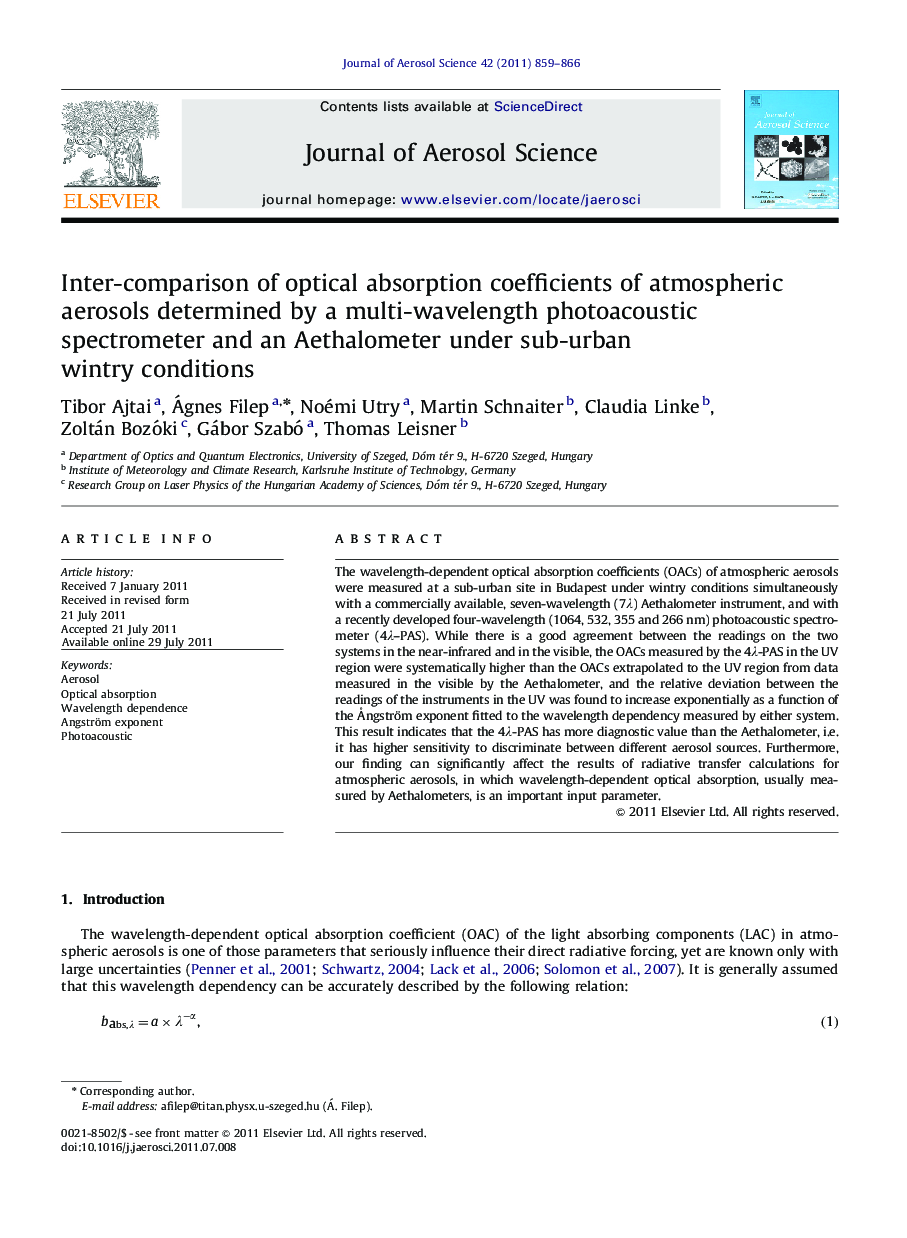| Article ID | Journal | Published Year | Pages | File Type |
|---|---|---|---|---|
| 4452654 | Journal of Aerosol Science | 2011 | 8 Pages |
The wavelength-dependent optical absorption coefficients (OACs) of atmospheric aerosols were measured at a sub-urban site in Budapest under wintry conditions simultaneously with a commercially available, seven-wavelength (7λ) Aethalometer instrument, and with a recently developed four-wavelength (1064, 532, 355 and 266 nm) photoacoustic spectrometer (4λ–PAS). While there is a good agreement between the readings on the two systems in the near-infrared and in the visible, the OACs measured by the 4λ-PAS in the UV region were systematically higher than the OACs extrapolated to the UV region from data measured in the visible by the Aethalometer, and the relative deviation between the readings of the instruments in the UV was found to increase exponentially as a function of the Ångström exponent fitted to the wavelength dependency measured by either system. This result indicates that the 4λ-PAS has more diagnostic value than the Aethalometer, i.e. it has higher sensitivity to discriminate between different aerosol sources. Furthermore, our finding can significantly affect the results of radiative transfer calculations for atmospheric aerosols, in which wavelength-dependent optical absorption, usually measured by Aethalometers, is an important input parameter.
► In this study we measured the light absorption by aerosols under various measurement conditions. ► We made inter-comparison of different type of instrument responses. ► We realized a correlation between the Angström exponent and the relative deviation between the instrument readings at UV's wavelengths.
